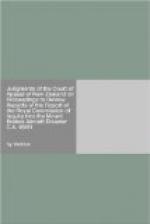Factual Background
In a written synopsis of argument presented before this Court by counsel for Air New Zealand it was said that background matters had to be understood as they were entirely relevant to the complaints made by the applicants in the present proceedings. But that “the Applicants do not propose to canvass any factual matters which fall outside the range of their specified allegations”. In regard to that last matter we emphasize again that this case (as counsel well realized) cannot be used to attack the Royal Commission findings as to the cause of the crash. On behalf of the applicants it was made clear nonetheless that their acceptance of the jurisdictional bar to such a challenge in the Courts did not mean and should not be used to draw any inference that they accepted the causation findings themselves (at least in the unqualified form in which they are set down in the Report). It is simply that they do all readily accept as they must that in no sense can these proceedings become an appeal against those findings. It is right to add that throughout the hearing in this Court that attitude has very properly been reflected in the submissions we heard. Thus the conclusions as to the cause of the crash must and do stand.
Late in 1976 Air New Zealand decided to commence a series of non-scheduled sightseeing journeys from New Zealand to the Ross Dependency region and return to this country without a touch-down at any intermediate point. They began with two flights in February 1977. There were four further journeys in October and November 1977, four in November 1978, and three more in November 1979—on 7th, 14th and 21st. The accident flight was to be the fourteenth of the series. In 1977 the designated route was one which used Cape Hallett on the north-eastern point of Victoria Land as the first southern waypoint on the continent itself en route further south either to a point adjacent to the Williams ice landing field (near Scott and McMurdo bases) or alternatively the south magnetic pole. One or other became the southernmost waypoint, the magnetic pole destination being used at the discretion of the pilot if weather conditions made the McMurdo area unsuitable for sightseeing.
Scott and McMurdo bases are located close together at the south-western tip of Ross Island which forms the eastern coast of McMurdo Sound. On the island there are four volcanic mountains including Mt. Erebus, the highest, at 12,450 feet. The Sound itself, which is about 40 miles long by 32 miles wide at the narrowest point, lies between mainland Antarctica and Ross Island and for most of the year it is covered with flat sea ice.




